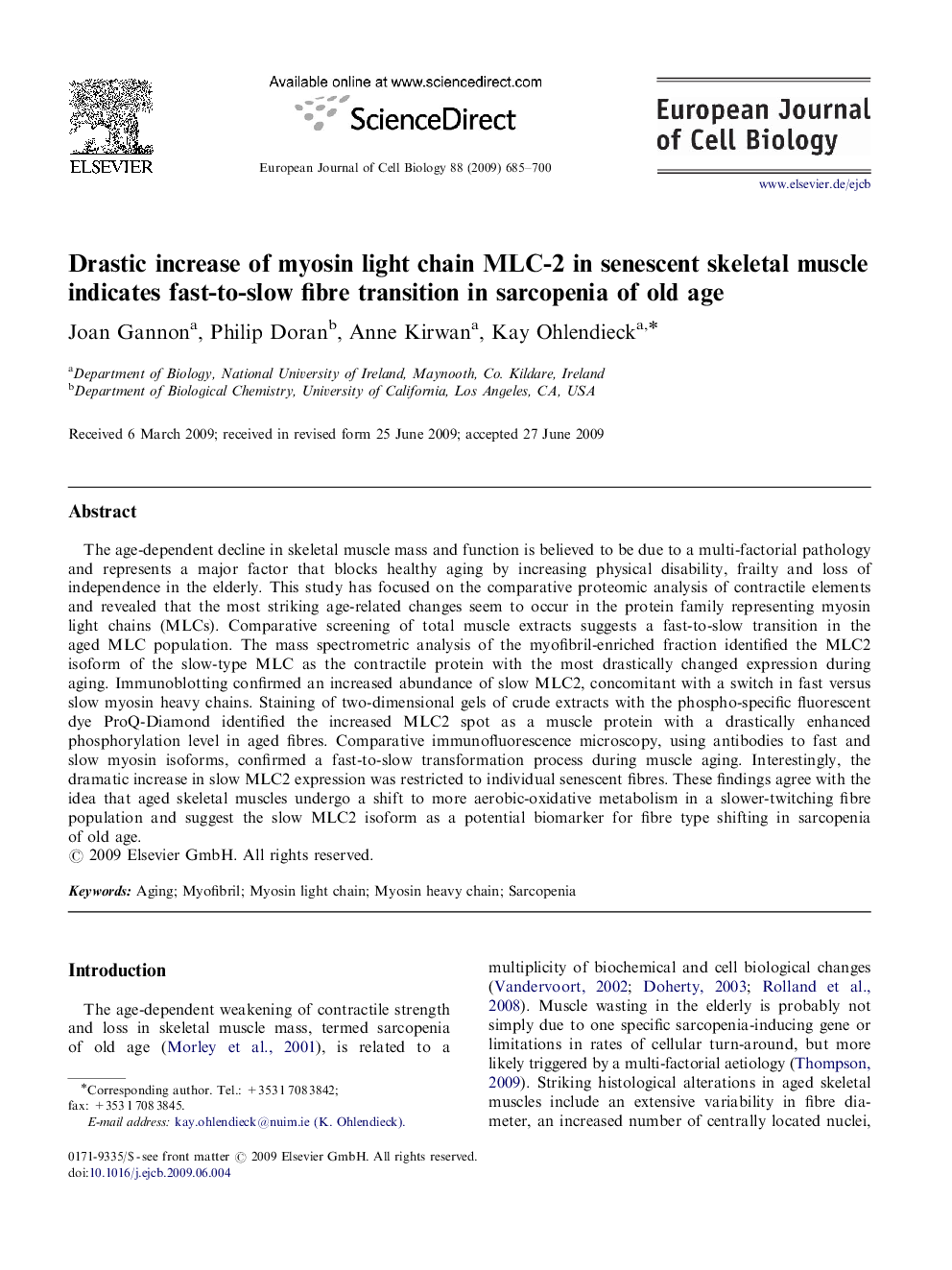| Article ID | Journal | Published Year | Pages | File Type |
|---|---|---|---|---|
| 2178684 | European Journal of Cell Biology | 2009 | 16 Pages |
The age-dependent decline in skeletal muscle mass and function is believed to be due to a multi-factorial pathology and represents a major factor that blocks healthy aging by increasing physical disability, frailty and loss of independence in the elderly. This study has focused on the comparative proteomic analysis of contractile elements and revealed that the most striking age-related changes seem to occur in the protein family representing myosin light chains (MLCs). Comparative screening of total muscle extracts suggests a fast-to-slow transition in the aged MLC population. The mass spectrometric analysis of the myofibril-enriched fraction identified the MLC2 isoform of the slow-type MLC as the contractile protein with the most drastically changed expression during aging. Immunoblotting confirmed an increased abundance of slow MLC2, concomitant with a switch in fast versus slow myosin heavy chains. Staining of two-dimensional gels of crude extracts with the phospho-specific fluorescent dye ProQ-Diamond identified the increased MLC2 spot as a muscle protein with a drastically enhanced phosphorylation level in aged fibres. Comparative immunofluorescence microscopy, using antibodies to fast and slow myosin isoforms, confirmed a fast-to-slow transformation process during muscle aging. Interestingly, the dramatic increase in slow MLC2 expression was restricted to individual senescent fibres. These findings agree with the idea that aged skeletal muscles undergo a shift to more aerobic-oxidative metabolism in a slower-twitching fibre population and suggest the slow MLC2 isoform as a potential biomarker for fibre type shifting in sarcopenia of old age.
